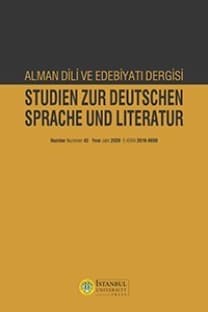Die Kinder- und Hausmärchen der Brüder Grimm als nationalsymbolisches Narrativ. Eine linguistische Untersuchung zur Funktion der Sammlung im Nationaldiskurs des 19. Jahrhunderts ABSTRACT
Anahtar Kelimeler:
Sociolinguistics, discourse, cultural nation, stylization, spoken vs. written language
The brothers Grimm’s Children’s and Household Tales as a national symbol. A linguistic analysis of the collection’s function in the national discourse of the 19th centuryThis essay deals with the connection between the linguistic usage in the brothers Grimm’s Children’s and Household Tales and the discursive context of their origin and adaptation between the years 1806 and 1857. The fairy tales were revised linguistically and with regard to their contents several times from the first to the seventh edition in order to address a broader audience. Based on the construct of an oral narrative tradition, the texts have undergone a popular stylization which can be proven on several linguistic levels. This will be illustrated by the example of the fairy tale Rapunzel. The examination is based on the main premise that references to the ideologies and positioning attempts of the social actors in the national discourse, who for the most part belong to the educated bourgeoisie, can be identified on different communicative levels. The interdisciplinary approach links to earlier results of structural linguistics, literary studies and folklore research and will expand them by a sociolinguistic perspective.
- Başlangıç: 1954
- Yayıncı: İstanbul Üniversitesi
